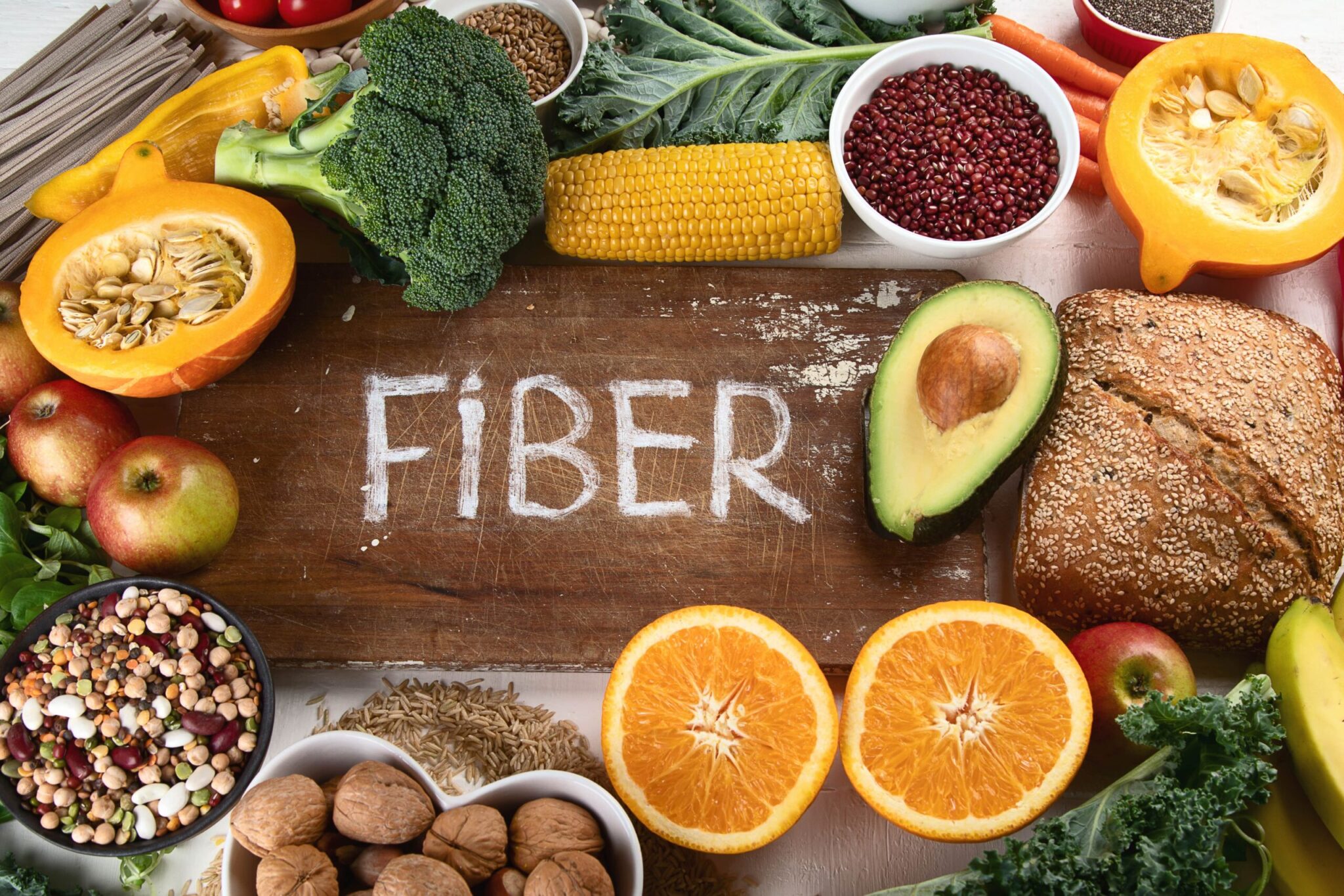
People rarely connect long-term fullness with the physical structure of what they eat. Many focus on calories, proteins, or sugar, but ignore texture and density. Fiber alters how food behaves in the stomach. Soluble fibers swell with water and slow digestion, making meals more satisfying. Insoluble fibers add bulk and accelerate movement through the intestines. Both types impact satiety, digestion, and nutrient absorption. People who include enough fiber in meals tend to snack less and stay full longer. They don’t necessarily eat fewer calories—but the calories work differently. That subtle shift over weeks and months often leads to gradual weight changes without harsh restriction.
Fiber slows down the release of glucose into the bloodstream after carbohydrate-rich meals
Fiber slows down the release of glucose into the bloodstream after carbohydrate-rich meals. When fiber is present, the body takes longer to convert carbs into sugars. That means fewer blood sugar spikes and less insulin released in response. Lower insulin levels reduce the body’s tendency to store fat. Stable blood sugar also lowers cravings later in the day. Without fiber, even small meals can lead to large insulin responses, which is not ideal for fat regulation. This mechanism matters not just for diabetics, but for anyone managing weight. Fiber isn’t just filler—it modifies how food interacts with hormonal signals.
Fermentable fibers become food for microbes that influence metabolism, inflammation, and hunger
Fermentable fibers become food for microbes that influence metabolism, inflammation, and hunger. These fibers bypass digestion in the stomach and small intestine. Once they reach the colon, gut bacteria ferment them and release short-chain fatty acids. Those compounds regulate gut pH, reduce inflammation, and affect how fat is stored in the body. Some short-chain fatty acids send signals to the brain that affect appetite. Others support the integrity of the gut lining, which plays a role in immune function. Without enough fermentable fiber, beneficial microbes decline while less helpful ones take over. That microbial imbalance is linked to bloating, weight gain, and low energy.
People who feel bloated after fiber often increase it too quickly without adjusting hydration
People who feel bloated after fiber often increase it too quickly without adjusting hydration. Fiber pulls water into the intestines, and without enough fluid intake, digestion stalls. That leads to gas buildup, cramping, and discomfort. The problem isn’t fiber—it’s timing and hydration. Gradual increases over several days help the body adapt without distress. Most guidelines recommend 25–38 grams of fiber daily, but many people get less than half of that. Trying to fix that overnight causes problems. Drinking more water and spacing fiber intake across meals prevents common side effects. The solution is slower adjustment, not fiber avoidance.
Soluble fiber supplements like psyllium or glucomannan are often used during structured diets
Soluble fiber supplements like psyllium or glucomannan are often used during structured diets. These fibers expand in the stomach and create a gel-like substance that delays gastric emptying. That helps reduce hunger between meals and improves stool consistency. Many diet programs include fiber as part of calorie control plans. When taken before meals, these supplements make people feel full with smaller portions. However, they must be taken with water and timed carefully. Taking too much without fluids can lead to choking or intestinal blockages. Proper use requires consistent habits, not sporadic doses. When used correctly, they can support other efforts without adding calories.
Fiber intake improves regularity, which contributes to hormonal stability and detoxification cycles
Fiber intake improves regularity, which contributes to hormonal stability and detoxification cycles. Constipation disrupts estrogen clearance and slows down the body’s natural filtration processes. That leads to hormone recycling and increased inflammation. High-fiber diets prevent this by accelerating waste removal. Daily elimination helps maintain steady hormone levels, especially in people sensitive to fluctuations. In addition, regular bowel movements reduce reabsorption of toxins released during digestion. This subtle benefit supports clearer skin, improved mood, and reduced fatigue. Weight loss isn’t just about calories—it also involves how smoothly the body processes waste. Fiber supports that invisible system every day.
Foods rich in fiber usually contain other nutrients that help with satiety and blood sugar control
Foods rich in fiber usually contain other nutrients that help with satiety and blood sugar control. Vegetables, legumes, nuts, and whole grains also contain magnesium, potassium, and polyphenols. These compounds regulate hunger signals and improve insulin sensitivity. Whole foods tend to digest more slowly, reducing energy crashes after meals. They also increase chewing time, which sends satiety signals to the brain earlier. Eating whole apples instead of drinking juice is a clear example. The fiber, combined with water and natural sugars, creates a balanced response. Fiber alone matters—but fiber in context matters more. It works best as part of a nutrient-dense food, not in isolation.
A healthy gut microbiome depends on diverse fiber sources, not just quantity alone
A healthy gut microbiome depends on diverse fiber sources, not just quantity alone. Different bacteria prefer different fiber types. Oats feed one group, while bananas feed another. When fiber intake lacks variety, only certain microbes thrive. That leads to imbalance, even if total fiber grams are high. Diversity matters because gut microbes support different functions. Some produce vitamins, others regulate immune cells. Balanced ecosystems rely on exposure to multiple substrates. Switching fiber sources regularly helps create a resilient microbial community. The more variety in diet, the more stability in gut behavior and systemic wellness. Fiber diversity is key—not just fiber totals.
Fiber consumption correlates with lower visceral fat and reduced waist circumference in long-term studies
Fiber consumption correlates with lower visceral fat and reduced waist circumference in long-term studies. Visceral fat surrounds organs and contributes to metabolic dysfunction. It’s more dangerous than subcutaneous fat stored under the skin. High-fiber diets reduce this internal fat even without major calorie cuts. That’s because fiber influences insulin, cortisol, and inflammation—three drivers of visceral accumulation. People with higher fiber intake tend to store fat differently, especially around the midsection. Waistline changes often happen gradually over months of consistent habits. These shifts aren’t always visible immediately but show up in health markers and mobility improvements over time.
Most people need to rethink meals entirely to meet daily fiber recommendations consistently
Most people need to rethink meals entirely to meet daily fiber recommendations consistently. Adding a spoon of bran to cereal isn’t enough. True change comes from meal design—base meals around plants, not proteins. Swap white rice for lentils, use vegetables as pasta, and add chia to yogurt. It’s less about restriction and more about reconstruction. Fiber isn’t an add-on; it’s a framework. Once meals center around fiber-rich foods, other nutrients fall into place naturally. Fullness improves, digestion stabilizes, and cravings reduce. Without that foundation, diets feel hollow. Fiber creates that invisible structure meals need to become nourishing, not just satisfying.
